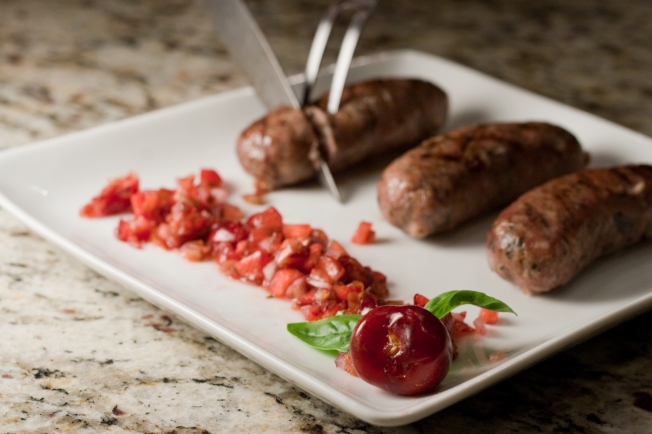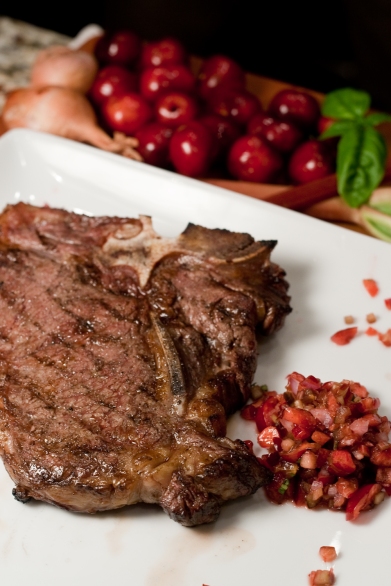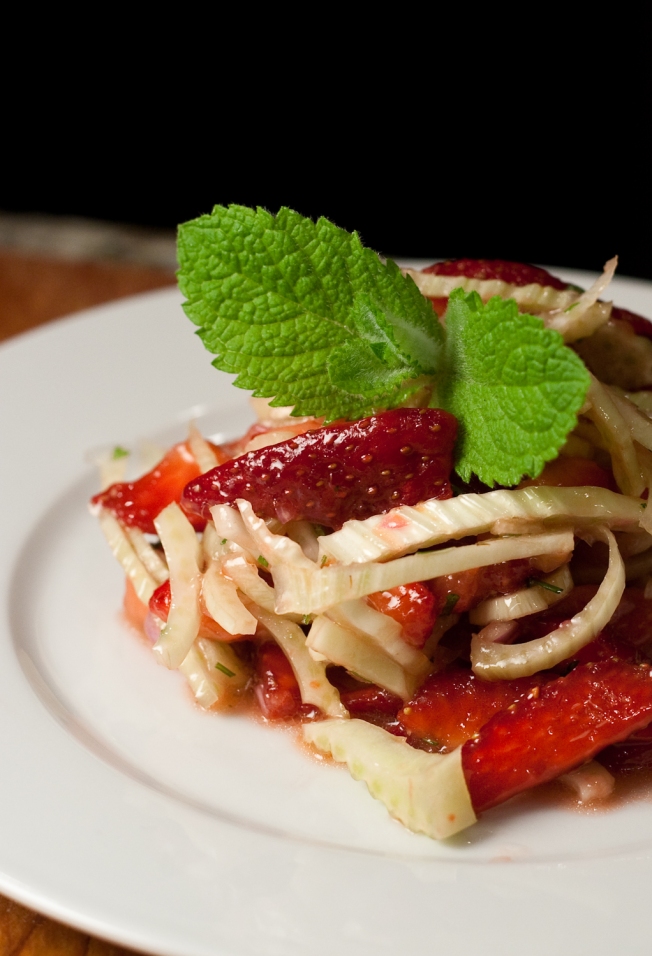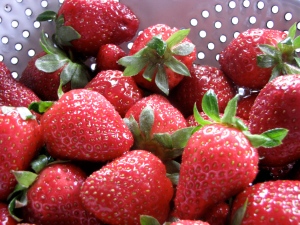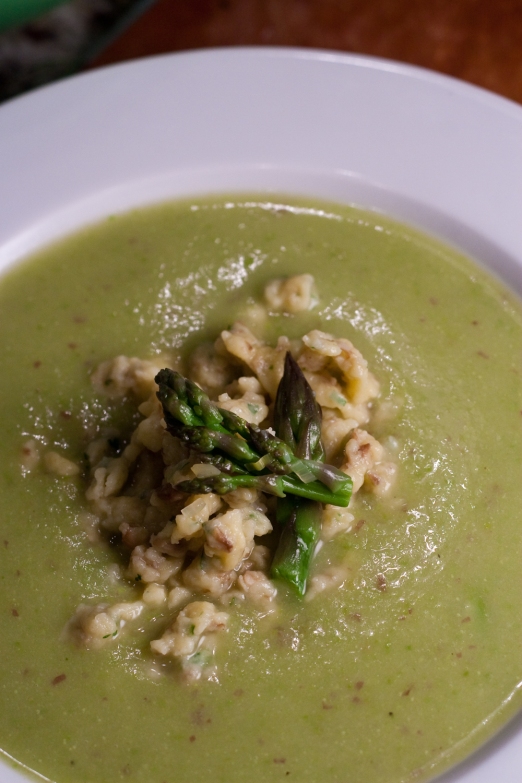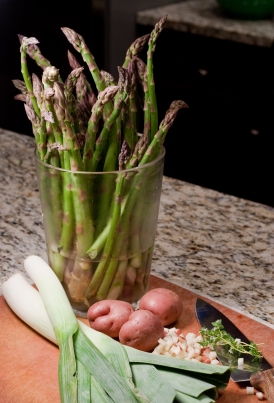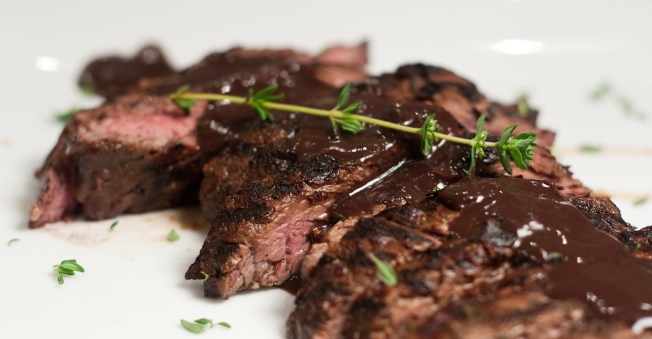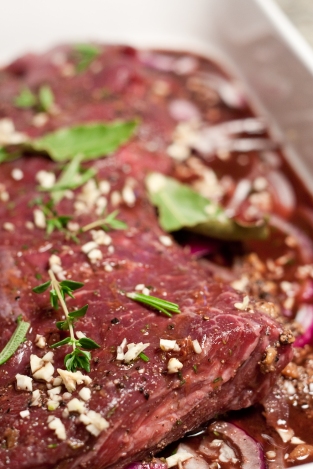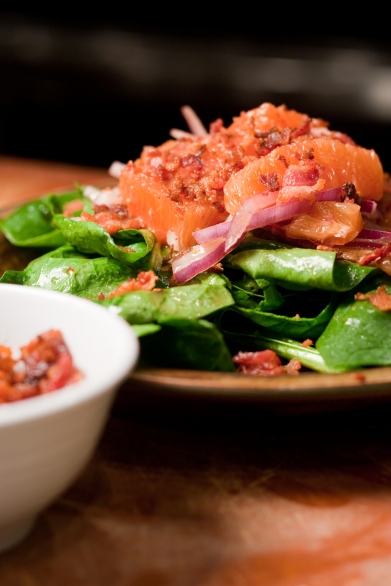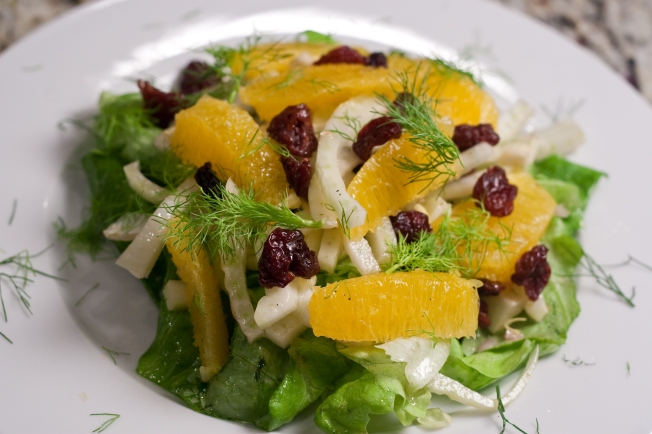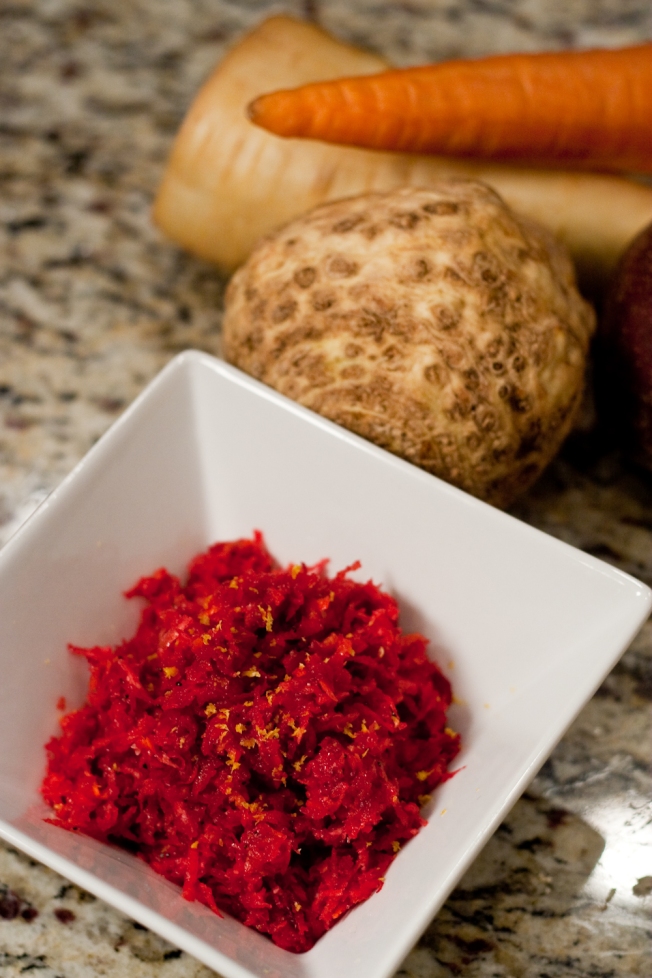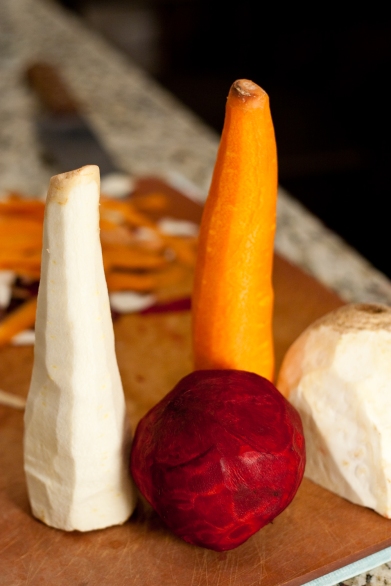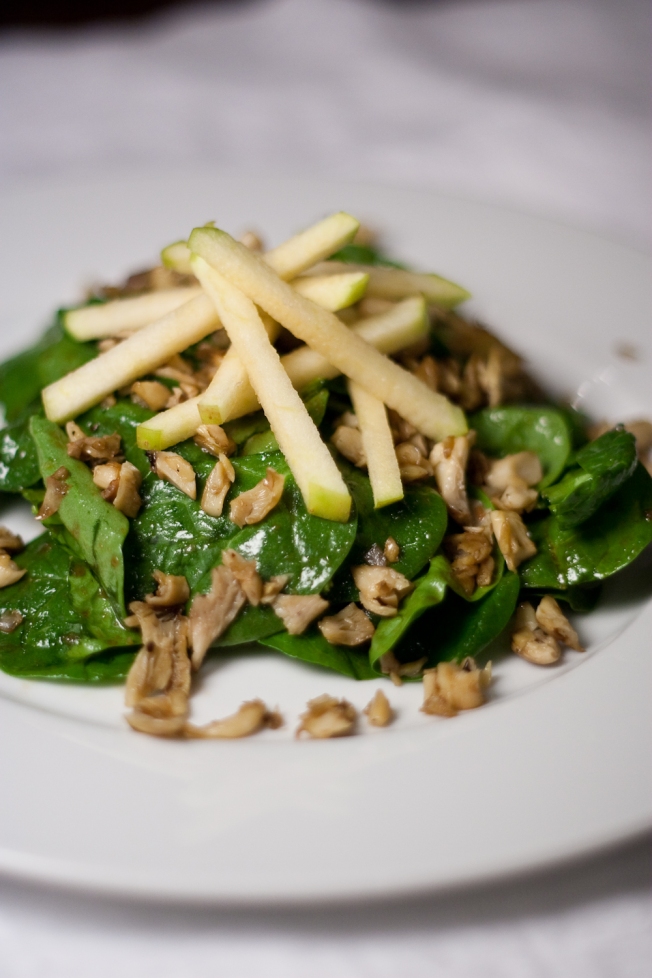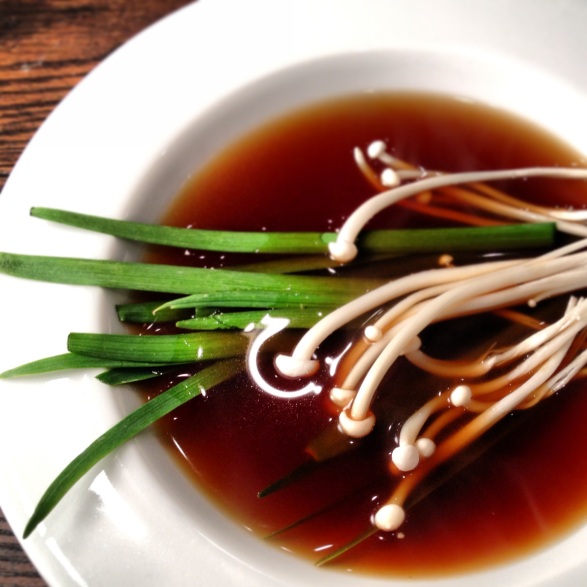My Babci’s* rhubarb plants grew on the edge of her large garden, near the maple tree, where we would sit and eat lunch at during the summer. My Mom’s plants sit on the back edge of my parents’s garden near the blueberry bushes. Each June the bright red stalks ripened about the same time we went strawberry picking.
Mom baked pies. My great aunt, Mary, made quick jam with rhubarb and strawberry jello. Babci gave us cups of sugar into which we’d dip the stalks and eat them raw.
Rhubarb is sharply bitter. Even with sugar it elicits a pucker. Cooked down into a thick, jammy chutney, I could still not imagine it without the balance of brown sugar.
But somehow, in this relish, it works. Balanced against ripe cherries, kept savory with shallot, bright with vinegar and warmed by cardamom it sits perfectly alongside rich meats – pork chops, grilled steaks and wild boar sausages*. You can use the food processor, but we hand chopped it. I like the texture and it keeps the flavors clearer. The extra few minutes in the kitchen provide extra time to chat, listen to music, or just enjoy the warm breeze coming in the window.
*Babci is Polish for grandmother. Wild Boar Sausages are available from Canales Quality Meats at Washington, DC’s Eastern Market.
Rhubarb Cherry Relish
Taste your cherries and your rhubarb. If the cherries don’t have much sugar or the rhubarb is particularly tart, you may need a pinch of sugar.
Makes 1 3/4 cups
Ingredients:
- 1/2 cup roughly chopped rhubarb
- 1 cup pitted and roughly chopped cherries
- 1/4 cup diced shallot
- 2 tsp minced basil
- 1.5 tsp White Balsamic or Ruby Red Grapefruit Vinegar*
- Cardamom
*A bright, fresh treat from Sapore Oil and Vinegar.
Directions:
- Mix together rhubarb, cherries and shallot in a food processor.
- Pulse a few times to desired texture. I prefer mine about the size of a fine dice. Remove to a small mixing bowl.
- OR – finely hand chop the rhubarb, cherries and shallot and mix together in a small bowl.
- Mix in basil and Ruby Red Grapefruit Vinegar. Season to taste with a pinch each of cardamom and salt.
- If you make this ahead of time, check seasoning right before serving. As juices develop you may find you want a pinch more of salt or cardamom or a little more fresh basil.
